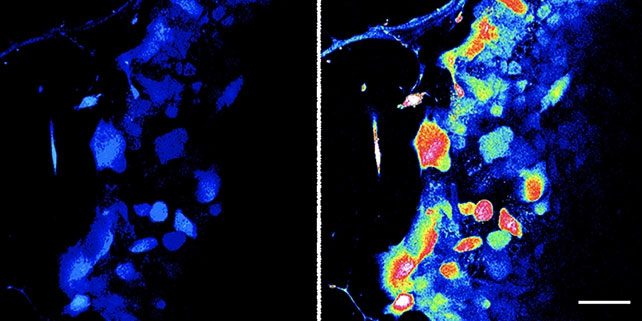A research team led by Imperial College London has demonstrated that human touch is not solely located in the skin.
According to Science Alert, scientists used RNA sequencing to discover that cells in a part of hair follicles known as the outer root sheath (ORS) have a higher density of touch-sensitive receptors compared to similar cells in the skin.
This is a groundbreaking finding as it has long been believed that only nerve endings in the skin and around hair follicles could transmit sensations.

The image shows that cells in the outer root sheath and hair are stimulated when impacted in the laboratory – (Photo: Science Advances).
Following this discovery, researchers cultured human hair follicle cells alongside sensory nerves in the laboratory.
When these cultured hair follicle cells were mechanically stimulated, the adjacent sensory nerves were also activated, indicating that the contact was recorded.
Furthermore, experiments revealed that neurotransmitters such as serotonin and histamine are released by ORS cells through small vesicles, serving as a means of signaling to surrounding cells.
These sophisticated sensory neurons interact specifically with low-threshold mechanoreceptors that can sense light touches.
“This is a surprising finding because we still do not understand why hair follicle cells play this role in processing light touches,” said biomedical engineer Claire Higgins from Imperial College London.
The team is continuing to investigate how hair follicles activate specific sensory nerves for a potentially unique and unclear mechanism, as their findings suggest that their functions are somewhat distinct from those of conventional sensory organs like the skin.
The fact that these sensory organs specifically release histamine, a neurotransmitter associated with local immune responses, may also relate to the mechanisms of certain skin diseases, including eczema, which causes long-term distress for many people.
Therefore, scientists are focusing on exploring the role of this process with the hope of developing new preventive and therapeutic methods for skin diseases.




















































